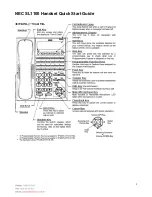
23
4 Mounting
LBR • Two-wire 4 … 20 mA/HART
62273-EN-200520
Distance d
(m)
2°
4°
6°
8°
10°
100
3.5
7
10.5
13.9
17.4
110
3.8
7.7
11.5
15.3
19.1
120
4.2
8.4
12.5
16.7
20.8
Example:
In a vessel 20 m high, the installation position of the sensor is 1.4 m
from the vessel centre.
The necessary angle of inclination of 4° can be read out from this
table.
Proceed as follows to adjust the angle of inclination with the swivelling
holder:
1. Loosen the terminal screws of the swivel holder by one turn. Use
a hexagon socket wrench, size 5.
1
Fig. 18: LBR with swivelling holder
1 Terminal screws (6 pcs.)
2. Align the sensor, check angle of inclination
Note:
The max. angle of inclination of the swivelling holder is approx. 10°
3. Re-tighten the terminal screws, max. torque see chapter "
Techni-
cal data
".
The mounting location of the radar sensor should be a place where no
other equipment or fixtures cross the path of the radar signals.
Vessel installations, such as e.g. ladders, limit switches, heating spi-
rals, struts, etc., can cause false echoes and impair the useful echo.
Make sure when planning your measuring point that the radar sensor
has a "
clear view
" to the measured product.
In case of existing vessel installations, a false signal suppression
should be carried out during setup.
If large vessel installations such as struts or supports cause false
echoes, these can be attenuated through supplementary measures.
Small, inclined sheet metal baffles above the installations "
scatter
"
the radar signals and prevent direct interfering reflections.
Vessel installations
















































